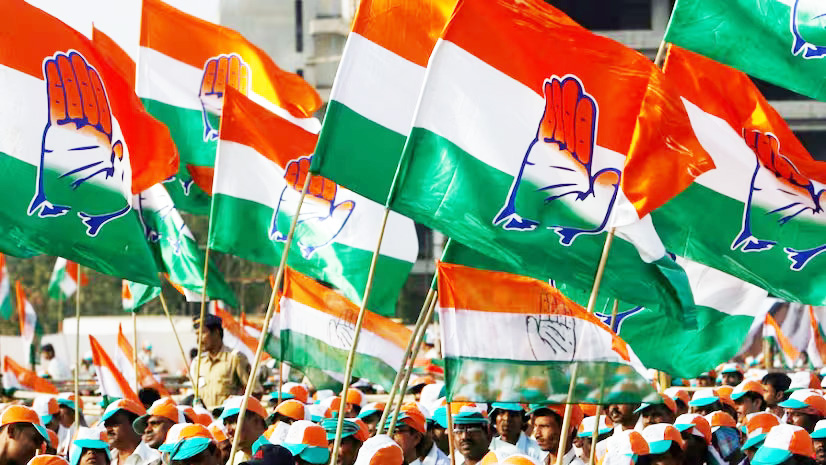Kumari Annapurna
The Indian National Congress, a pivotal force in India’s struggle for independence and its post-independence political landscape, has long been associated with the rhetoric of unity. Its emphasis on Hindu-Muslim unity during the freedom movement is well-documented, as it sought to forge a collective national identity against colonial rule. However, a critical examination reveals a significant gap in its approach: the lack of concerted effort to address Dalit-Savarna consciousness and foster unity within the Hindu social fabric. This raises a pertinent question—did Congress deliberately sidestep the issue of Dalit-Savarna unity, and in doing so, did it undermine the broader unity of Hindus? This article explores the historical, social, and political factors behind Congress’s approach, analyzing its priorities, limitations, and the implications of its choices.
Hindu-Muslim Unity: A Strategic Priority
The Congress’s focus on Hindu-Muslim unity was rooted in the political exigencies of the colonial era. The British policy of “divide and rule” exploited communal tensions, particularly between Hindus and Muslims, to weaken the nationalist movement. Events like the partition of Bengal in 1905 and the introduction of separate electorates under the Morley-Minto Reforms of 1909 deepened communal divides. Congress, under leaders like Mahatma Gandhi, Jawaharlal Nehru, and Maulana Azad, recognized that a united front was essential to challenge British hegemony. Initiatives like the Khilafat Movement (1919–1924) and Gandhi’s emphasis on communal harmony were strategic efforts to bridge the Hindu-Muslim divide and consolidate anti-colonial sentiment.
This focus was not merely ideological but pragmatic. Muslims constituted a significant portion of India’s population, and their alienation could have fractured the nationalist movement. Congress’s alliances with Muslim leaders and organizations, such as the All-India Muslim League (before its shift toward separatism), were aimed at presenting a unified resistance. However, this singular focus on Hindu-Muslim unity often overshadowed other social cleavages, particularly the deep-seated caste hierarchies within Hindu society.
The Dalit-Savarna Divide: A Neglected Fault Line
The caste system, with its rigid hierarchies, has been a defining feature of Hindu society for centuries. Dalits, historically relegated to the margins as “untouchables,” faced systemic exclusion, economic exploitation, and social stigma. While Congress championed the cause of national unity, its engagement with the Dalit question was inconsistent and often superficial. The party’s failure to prioritize Dalit-Savarna consciousness—i.e., fostering mutual understanding and equality between Dalits and upper-caste (Savarna) Hindus—reflected both ideological blind spots and political calculations.
One reason for this neglect was the composition of Congress’s leadership. Dominated by upper-caste elites, including Brahmins and other Savarna groups, the party’s worldview was shaped by their social milieu. Leaders like Gandhi, despite their commitment to social reform, often approached the caste question through a paternalistic lens. Gandhi’s campaigns against untouchability, such as the Harijan upliftment movement, focused on moral persuasion rather than structural change. His insistence on reforming the caste system from within, rather than dismantling it, alienated radical Dalit leaders like B.R. Ambedkar, who sought systemic transformation.
Ambedkar’s critique of Congress is particularly revealing. He argued that the party’s commitment to Hindu unity was inherently Savarna-centric, prioritizing the interests of upper castes while marginalizing Dalits. The Poona Pact of 1932, which replaced separate electorates for Dalits with reserved seats, is a case in point. While Gandhi framed it as a victory for Hindu unity, Ambedkar saw it as a compromise that diluted Dalit political autonomy. Congress’s reluctance to embrace Ambedkar’s vision of caste annihilation reflected its fear of alienating its Savarna base, which wielded significant social and economic influence.
Political Expediency Over Social Justice
Congress’s approach to the Dalit question was also shaped by electoral and political considerations. In pre-independence India, the party relied heavily on the support of landed elites and upper-caste communities, who formed the backbone of its organizational structure. Addressing the Dalit-Savarna divide head-on risked antagonizing these groups, many of whom upheld caste hierarchies. Congress’s strategy was to maintain a broad coalition, avoiding issues that could fracture its support base.
Post-independence, this pattern continued. While the Constitution, drafted under Ambedkar’s leadership, enshrined principles of equality and affirmative action, Congress’s implementation of these measures was often half-hearted. Reservation policies and anti-discrimination laws were introduced, but their enforcement was weak, particularly in rural areas where caste oppression was most entrenched. Congress governments frequently prioritized economic development and secularism over social justice, assuming that caste inequalities would gradually dissolve with modernization. This assumption proved flawed, as caste continued to shape social and political dynamics.
The party’s engagement with Dalit issues was often reactive, driven by the rise of Dalit movements rather than proactive policy. For instance, the emergence of the Dalit Panthers in the 1970s and the Bahujan Samaj Party in the 1980s forced Congress to address Dalit concerns, but these efforts were often limited to co-opting Dalit leaders or offering symbolic gestures. The lack of a sustained program to foster Dalit-Savarna consciousness—through education, social campaigns, or policy interventions—underscored Congress’s reluctance to confront caste head-on.
Did Congress Undermine Hindu Unity?
The question of whether Congress avoided maintaining the unity of Hindus is complex. On one hand, the party’s focus on Hindu-Muslim unity was a deliberate attempt to strengthen the nationalist movement, which included Hindus as a broad category. Gandhi’s concept of “Ram Rajya” and his emphasis on Hindu scriptures were meant to appeal to Hindu sentiments while promoting inclusivity. However, by sidelining the Dalit-Savarna divide, Congress inadvertently perpetuated a fractured Hindu identity. The exclusion of Dalits from the mainstream Hindu fold, both socially and politically, created a sense of alienation that persists to this day.
Critics argue that Congress’s approach reinforced a hierarchical Hindu unity, one that privileged Savarna interests while marginalizing Dalits. This selective unity was evident in the party’s reluctance to challenge practices like untouchability with the same vigor it applied to communal harmony. By avoiding the Dalit-Savarna question, Congress missed an opportunity to forge a more inclusive Hindu identity, one that transcended caste and embraced social equality.
On the other hand, Congress’s defenders contend that the party faced immense challenges in balancing multiple social and political demands. The urgency of Hindu-Muslim unity in the face of colonial divide-and-rule tactics and the looming threat of partition left little room for addressing intra-Hindu divisions. Moreover, the caste question was deeply entrenched, requiring long-term structural changes that could not be achieved overnight. Congress’s gradualist approach, while flawed, was an attempt to maintain stability while pursuing incremental reforms.
Implications and Contemporary Relevance
The legacy of Congress’s approach continues to shape India’s social and political landscape. The rise of Dalit political parties and movements reflects the unmet aspirations of Dalit communities, who feel betrayed by Congress’s failure to address their concerns. At the same time, the party’s emphasis on secularism and communal harmony has been criticized by some as a form of “pseudo-secularism” that ignores the internal contradictions within Hindu society.
In contemporary India, the question of Dalit-Savarna unity remains as relevant as ever. The persistence of caste-based discrimination, violence, and inequality underscores the need for a concerted effort to foster mutual understanding and equality. Political parties, including Congress, must move beyond tokenism and address the structural roots of caste oppression. This requires not only policy interventions but also a cultural shift that challenges Savarna privilege and promotes inclusive narratives of Hindu identity.
The Indian National Congress’s emphasis on Hindu-Muslim unity was a strategic necessity during the freedom struggle, but its neglect of Dalit-Savarna consciousness reveals a critical blind spot. Shaped by its upper-caste leadership, political expediency, and a gradualist approach to social reform, Congress failed to address the deep-seated caste divide within Hindu society. While it sought to unite Hindus under a broad nationalist banner, its reluctance to confront caste hierarchies undermined the possibility of a truly inclusive Hindu unity. The consequences of this failure continue to resonate, highlighting the need for a renewed commitment to social justice and equality in India’s political discourse.





